5 Types of Circuit Breakers
Updated: Nov. 13, 2023
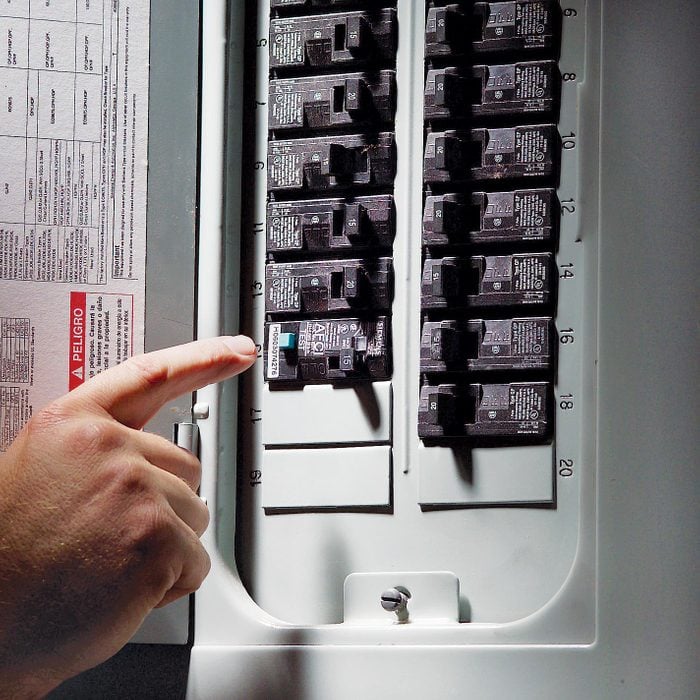
Circuit breakers protect our lives and property from dangerous electrical situations. Here's what you need to know about these critical devices.
We’ve all been annoyed by a tripped circuit breaker at one point in our lives. Whether you’re getting ready for a night out or cooking dinner on a major holiday, it usually happens at the worst possible time.
Before you reset the breaker and hope for the best, it’s a good idea to understand what these devices do and why they are so crucial for electrical safety.
Circuit breakers protect electrical circuits by cutting off the flow of electricity when they detect too much current on the circuit. This “overcurrent” can be caused by having too many things plugged in at once or a sudden surge of electricity known as a short circuit or ground fault.
Overcurrent can damage electrical equipment in your home or give you a shock if you happen to be in the path of the current. Circuit breakers work quickly to mitigate the effects of overcurrent, so the National Electrical Code (NEC) requires them for every circuit in your panel, with limited exceptions. Get to know about the concept of overcurrent protection.
Here are the most common types of breakers you’re likely to encounter in your home.
On This Page
Standard, Single-Pole Breaker
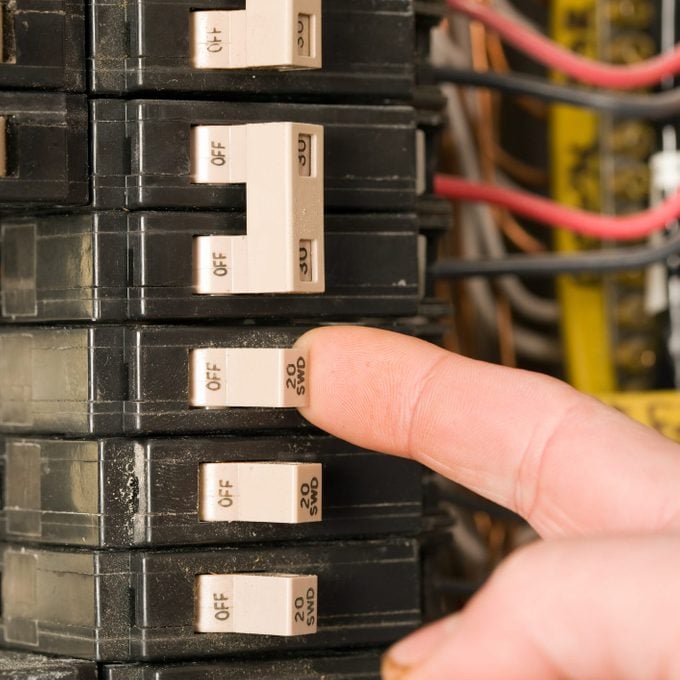
A single-pole breaker protects a single circuit in your home’s electrical system. This single circuit might power the lights in your living room or feed receptacles in your kitchen. Single-pole breakers take up one slot in your home’s electrical panel and typically protect 15-amp and 20-amp circuits.
In a normal scenario, the breaker sits in the circuit like an open gate, allowing current to circulate in the wires, going out to where it’s needed and back again to the panel. When a circuit gets overloaded or experiences a sudden surge called a fault, the gate shuts, stopping the flow of electricity in the circuit.
The breaker can be reset and used again, but only if you resolve the overcurrent situation. If a breaker keeps tripping, investigate. If you’re not sure what’s causing it, call a licensed electrician for help.
The ability to reset a breaker is a significant advantage over fuses, which were common in homes before the introduction of circuit breakers. Fuses can only be used once. If a fuse blows, you have to replace it.
Standard, Double-Pole Breaker

Double-pole breakers work the same way as single-pole breakers, but they protect circuits that power larger equipment, like air conditioners, ranges and dryers. These appliances can’t run on a regular 120-volt circuit, which uses one hot wire to deliver current. A big 50-amp air conditioner uses two hot wires to deliver enough current for the appliance to operate.
Both “hots” need protection from overcurrent, so we use a double-pole breaker that accepts two wires instead of one. These breakers are larger than single-pole, so they take up two slots in your panel. If a double-pole breaker trips, it has a handle that allows you to reset both hots simultaneously.
Double-pole breakers, like single-pole, protect against overloads (too many things plugged in) and faults.
Ground Fault Circuit Interrupter (GFCI) Breaker
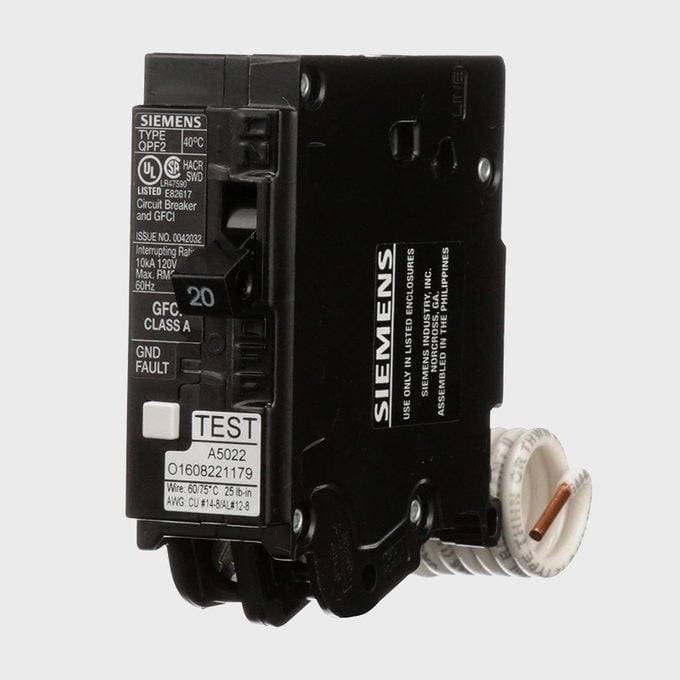
You’ve used GFCI receptacles in your kitchen and bathrooms, but what about GFCI circuit breakers?
GFCIs protect people from a specific source of electrical shock, the ground fault. That occurs when electricity from a hot wire takes an unintentional path to ground through conductive things that don’t normally carry electricity. This path could be a metal pipe in the wall, the outside of an appliance — or you.
GFCIs detect the amount of current going out to the load (what you’re powering) and compare it to the current coming back to the panel. If the difference between the two paths is more than six milliamps, the GFCI opens the circuit, stopping the flow of electricity. This happens in as little as 1/40 of a second.
The NEC requires GFCIs in places where water is a common hazard. Bathrooms, kitchens, garages, crawl spaces and outdoor receptacles must be GFCI-protected.
Arc Fault Circuit Interrupter (AFCI) Breaker
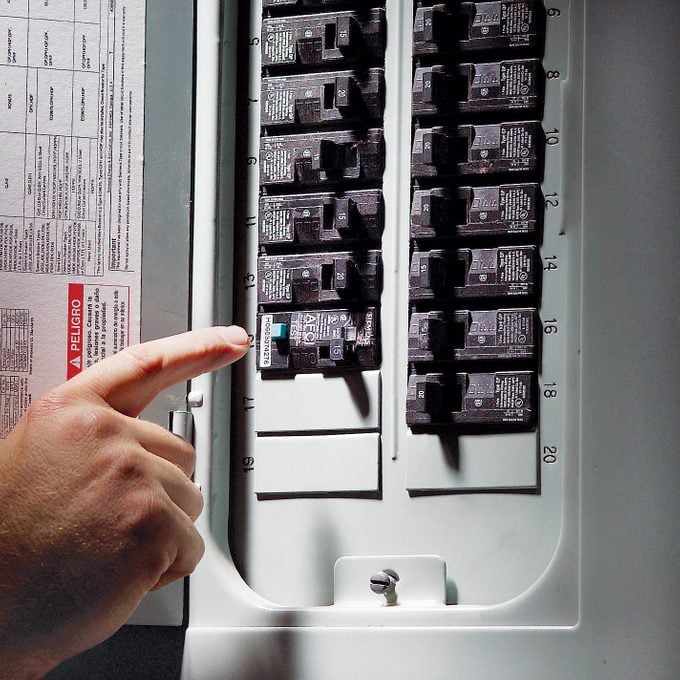
Arc fault protection is a relatively new requirement in the NEC, first made mandatory for bedrooms in 2002. Since then, the NEC has expanded AFCI protection requirements to include nearly every room in your house, except bathrooms and basements. In new construction and remodels, AFCIs are replacing standard breakers as the most common breakers in your panel.
AFCIs protect your home from fires by monitoring circuits for dangerous electrical arcs.
What’s an electrical arc? Imagine two wires connected under a wire nut. As long as the connection is tight, the current flows seamlessly through the splice. If that connection comes loose, the electricity will try to “jump” from one wire to the other to continue its path, creating an arc between the conductors.
If that arc happens in an old lamp cord behind the living room curtains, you could be looking at a dangerous situation. Any combustible material in the vicinity of that arc has the potential to catch fire.
An AFCI breaker detects these unintentional arcing events wherever they occur, and immediately severs the flow of electricity to the circuit.
AFCI/GFCI Dual-Function Breaker
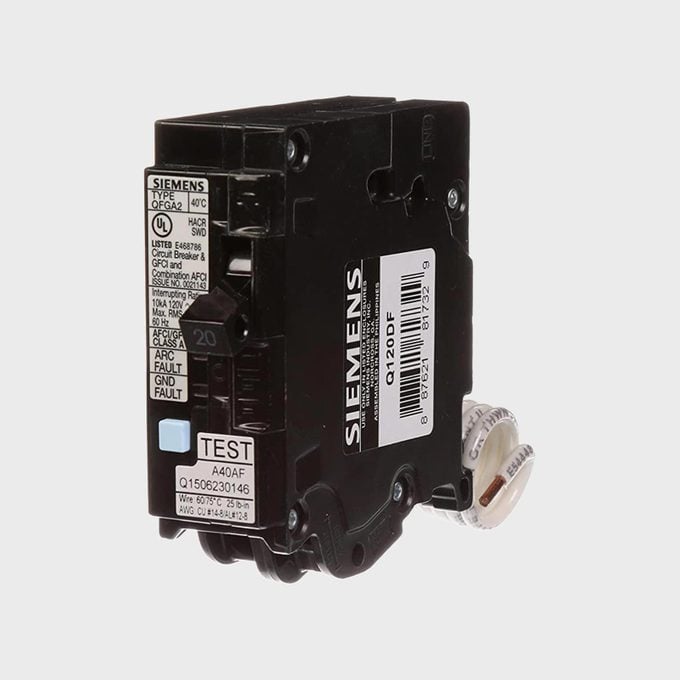
Kitchens and laundry rooms require GFCI and AFCI protection, so the dual-function breaker combines both levels of protection into one device. Before these breakers came about, a homeowner would have to use an AFCI breaker and a GFCI receptacle to achieve both levels of protection on one circuit.
If your house is newer, or if you’ve updated your electrical panel in the last few years, you may see these dual-function breakers in your panel instead of standard, GFCI or AFCI breakers.
